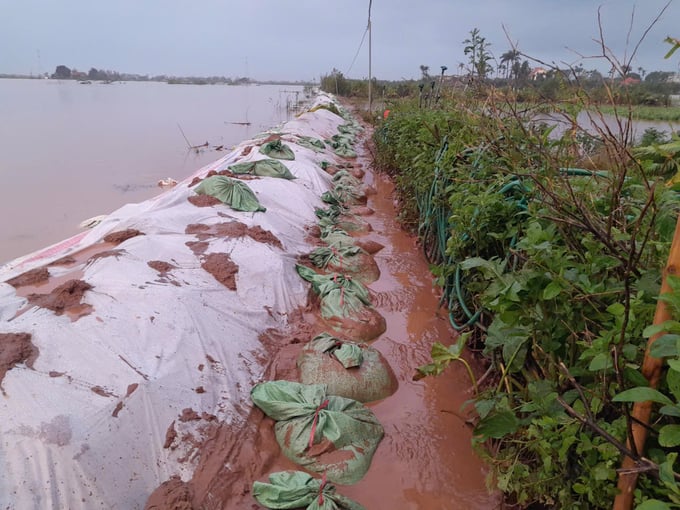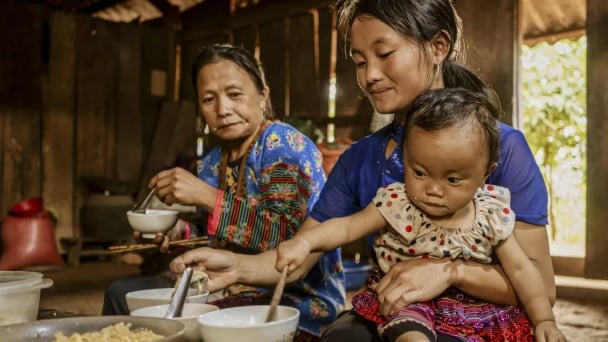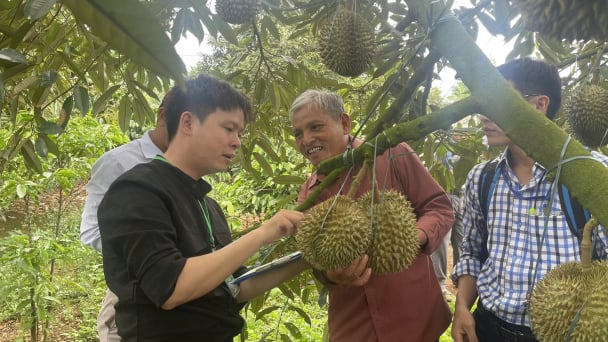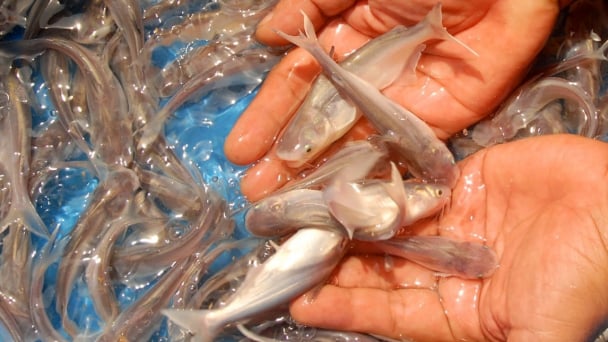June 1, 2025 | 18:56 GMT +7
June 1, 2025 | 18:56 GMT +7
Hotline: 0913.378.918
June 1, 2025 | 18:56 GMT +7
Hotline: 0913.378.918
Bac Hung Hai - the largest irrigation project in the North, has just undergone a challenging period. From September 6 to 12, rainfall in the Northern Midlands and Delta region was 320 - 380 mm. A report from the Department of Water Resources shows that in the provinces of Ha Nam, Hung Yen, Thai Binh, and Nam Dinh alone, rainfall reached 400 - 460 mm. Water from villages, residential areas, industrial zones, and highlands simultaneously poured into the main river system and canals of the Bac Hung Hai irrigation system, turning this place into a colossal water bag.

A spill incident occurred at a canal bank of Bac Hung Hai river in Thanh Mien district, Hai Duong province. The local "4 on-site" force promptly reinforced the canal bank to ensure safety. Photo: Ngoc Thanh.
The Bac Hung Hai system recorded 292 incidents in total, including 34 points of canal bank collapse with a length of 1,289 m; 214 points of canal bank overflow with a total length of 48,575 m; 7 points of seepage and leakage through the canal body with a length of 755 m; and 16 points of sand boil. The vision of "the water breaking the bank" can become reality at any time.
Faced with a tense situation beyond all calculations, Bac Hung Hai Irrigation Management Company had to urgently report to local authorities (Hung Yen and Hai Duong), the Department of Water Resources and the Ministry of Agriculture and Rural Development to implement a series of solutions in an attempt to stabilize the system.
To reduce water pressure in the canal system, the Department of Water Resources issued an urgent order to stop operating the focal pumping stations in the river. A mission led by Director of Department of Water Resources Nguyen Tung Phong was also established to check the actual situation and discuss solutions to handle any pressing matters.
Flooding at that time showed unpredictable developments. The Department of Water Resources and the scientists along with Bac Hung Hai Company even considered the worst scenario, which was to cut many points in Bac Hung Hai canal to separate water into low-lying areas or rice areas that have been determined to be unsavable and calculate locations of channels so localities can all share the damage. Fortunately, after that, rainfall decreased. By September 13, floods on the Red river and some outer rivers gradually withdrew, creating favorable conditions for the system to drain water.
On September 7, 2024, the Typhoon Yagi just landed in Vietnam’s territory. But before that, on September 4 and 5, the Department of Water Resources has issued two official telegrams and one written request to localities to implement safety measures for irrigation works, prevent flooding and inundation due to the effects of storms.
In particular, the Department called for the operation of pumping and draining water to the lowest possible level in the system of canals and low-lying areas, preparing personnel ready to be on duty, means and supplies to maximize operation in the water draining works.

The mission of the Department of Water Resources has taken into account the plan to split the Bac Hung Hai canal to divide water for localities, avoiding the risk of breaking canals in the worst situation. Photo: Ngoc Thanh.
From September 11 to 13, 2024, the water level of the rivers rose, many areas of the water level had exceeded the alert levels II and III, affecting the operation of the drainage irrigation works. For the first time, four inter-provincial irrigation systems (Bac Hung Hai, Bac Duong, Northen Nam Ha, Nhue River) had to stop the pump, which meant no more draining water from the inland to the canal to protect the work. This caused the flooding situation to be prolonged.
Additional rain in combination with rapidly increasing water levels in river systems made it difficult for draining. The waterlogging situation on rice fields became even more severe, reaching the highest level of 190,286 ha of flooded or crushed crops on September 13. On September 14, the flooding area decreased. On September 20, the whole Red River Delta was no longer flooded.
Looking back at the operation of regulating irrigation for waterlogging, storm prevention and control, Nguyen Tung Phong, Director of the Department of Water Resources offered a number of key tasks in the near future.
The first priority was to control the regulations in the irrigation work operation process. In case there were regulations not in accordance with the practice, it was deemed essential to report so the competent authority could organize the adjustment of the operation process.
Specialized units need to study and propose solutions to improve the operation capacity of the focal drainage point in case the water level of the discharge pool or outer river is high, ensuring the initiative in operating during the flood period.
It is also necessary to strengthen the online monitoring of meteorology, specialized hydrology, and operation status of irrigation works to support the direction and operation of competent authorities, particularly in times of rain and floods.
Translated by Samuel Pham

(VAN) 30 experts in health, agriculture and environment participated in a consultation workshop to inform the development of a methodological framework aimed at supporting Vietnam’s transition to a sustainable food system.

(VAN) Over the past five years, Quang Ninh Province has vigorously and synchronously implemented the ‘Say No to Plastic Waste’ campaign, yielding positive outcomes in advancing sustainable tourism.

(VAN) The prevention of plastic pollution necessitates collaboration among governments, businesses, and citizens. Today's little things contribute to a future free of plastic.

(VAN) This was the directive given by Deputy Minister Phung Duc Tien during a meeting with the Department of Livestock Production and Animal Health, and relevant stakeholders to prevent and control African swine fever.

(VAN) For the durian industry to succeed, the value chain must fulfill its commitments to the government, the community, and international partners.

(VAN) Vaccinating juvenile pangasius helps reduce disease, antibiotic use, and farming costs, increasing profits for export-oriented farmers in An Giang.

(VAN) Due to a limited supply of workforce and competitive recruitment requirements, businesses struggle to retain talented veterinary human resources.